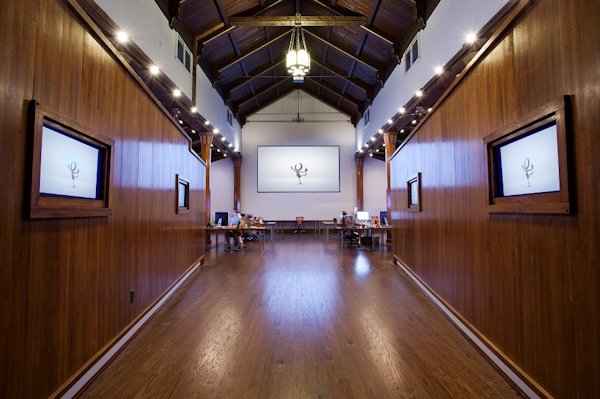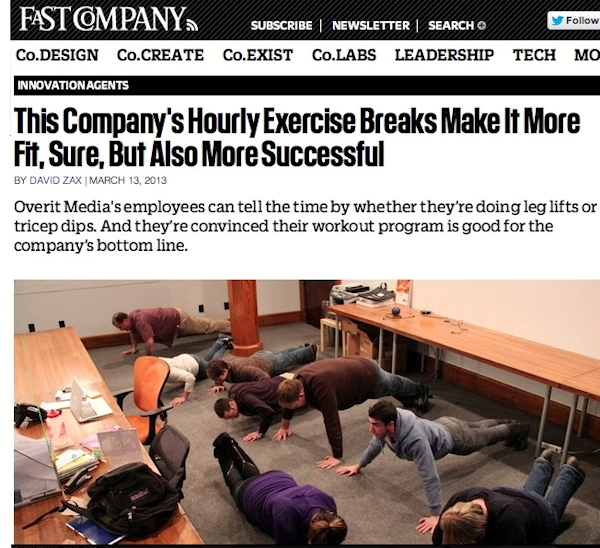
Last month Marissa Mayer became one of the most disliked women in tech after she told Yahoo’ers it was time to get back to work.
Literally, get back to work.
In a memo leaked round the Interwebz, Mayer told her staff (and accidently, the world) about her vision to create a more united Yahoo. To do that, the days of telecommuting at Yahoo were put to a close. Every Yahoo staff member must report back to the office.
Because Yahoo is a notable player and because Mayer is a woman, the decision has been debated , argued, and analyzed. She’s been called a tyrant who needs to get off her cloud with pundits going as far as to blame her for increasing air pollution.
Yeah. That.
And with that, the question of “what creates the best working environment” has reached fever pitch. Partly due to Mayer’s standing, but also because the idea of being chained to a desk goes against our industry’s “trendier” ideas of what constitutes a positive working environment. In the frenzy to defend telecommuter rights, the traditional office environment has taken quite a lashing.
Before we throw the baby out with the bathwater and deem office life uncivilized, maybe it’s important to think about how bringing employees back into the office and out of their pajamas can actually help, not harm, them.
Fostering More Human Relationships
What’s that? We have Skype and video conference and other technology, you say? You’re right. We absolutely do.
Technology is a great thing. It allows us to do more, faster and with more ease than ever before. But for as much as technology brings us together, it also, seemingly without realizing it, tears us apart. Too much reliance on technology for communication and we suddenly forget how to do just that – communicate.
Bringing people back into the office and creating a situation where colleagues must look one another in the eye when speaking lays the groundwork for healthy communication during difficult or stressful times. Video conferencing via Skype is great for weekly reports or when you want to pass on kudos or catch up on a client project. But when the shit hits the fan, when a tough decision needs to be challenged and people need to have real dialogue, those conversations are better had face-to-face where an existing relationship can lay the groundwork for compromise and advanced problem-solving.
If you’ve ever resolved a 50 message email thread with a five minute conversation held at someone’s desk you know the ability to look someone in the eye can change the conversation. So is it so crazy to think it can also change the result?
Creates Structure
Creating a structured work environment benefits workers. It provides set hours when you are on and when you are off, and it provides set hours to your employer when you are on and when you are off. This is important. It’s important in helping employees differentiate “work” from “home” and it helps employees to not feel like an indentured servant when their boss sends them things to tackle regardless of whether it’s 8 a.m., 8 p.m. or 4 a.m.
When your home and your office are the same space the differentiation becomes hard to manage without actively managing it. If Mayer felt like the Yahooligans needed to return back to the office, my guess is they weren’t managing it.
But just because there is structure, does not mean there can’t also be flexibility.
After years of working from home, today I work in an office. My core hours are 8:30 a.m. to 5:30 p.m. But I am not tied to my desk. If there is something I need to do, I feel the flexibility and the trust to go do it and come back.
Creating structure and shackling people to a time sheet are not equal things. If you’re having a problem with the latter, perhaps you need to reevaluate your job prospects.
True Company Culture
I greatly dislike talking about company culture because most of it is totally buzzword BS. When we talk about culture today, we’re typically referring to:
- Company exercise programs
- Pizza Friday
- Nerf gun wars
- Group happy hour
- Company bowling trips
Those are swell (and are all present at my company), but not one them represent what office culture really means. A few months ago Rand Fishkin wrote about what company culture is and what it is not and he gets to the heart of what company culture really is.
Rand defines it as:
- Your values: Those you state with words and those you exhibit through your actions
- Your mission and vision:The goal you’re driving toward and the force behind that goal
- Your hiring, firing, and promotion criteria:The reasons you bring people onto the team, the reasons you let them go, and the reasons you promote/reward them
Company culture is about identifying shared beliefs, things the company holds to be true about the world and shared priorities. Can you develop these things via a remote staff? You can. But I’d argue it’s much harder. When the staff sees the CEO and the executive management bleeding the same values and encouraging those values in its team, it creates a message and an example. It reaffirms who the company is every day, through action.
Camaraderie
Just because company movie nights and exercise programs don’t equate to company culture doesn’t mean they’re not important. They are. One of the perks of taking Yahoo employees out of their bedrooms and into an integrated working environment is the sense of camaraderie it puts back into office life.
Working from home is great. Until the moment it’s not. When your only-day time communication is taking place with your cats, instead of real-live people. Going back into a traditional working environment after years of self-employment was an adjustment for me – but it was a positive one and one that I needed. For many folks, it’s those little interactions that often job satisfaction.
I became more productive because I was working a more balanced day, one filled with projects and deadlines but also with water cooler high-fives and impromptu dance parties. And sometimes your company-wide exercise program does more than boost morale and help your staff shed pounds. Sometimes it gets you placed in Fast Company.

That was cool.
Instead of attacking the office working environment, let’s remember two things.
- Mayer didn’t inherit a successful, working company. She inherited Yahoo.
- The benefits of office face time are not a myth. There’s a reason employers like it when employees show up to work, and there’s a reason employees like it, too.
There’s a way to get the best of both worlds. To bring employees back into the office, while allowing them flexibility and breathing room into their day. By taking the good of office life and building on it, we can create an environment where creative and marketers benefit from working alongside one another. But to dismiss it entirely is to dismiss the benefits that integration provides.

